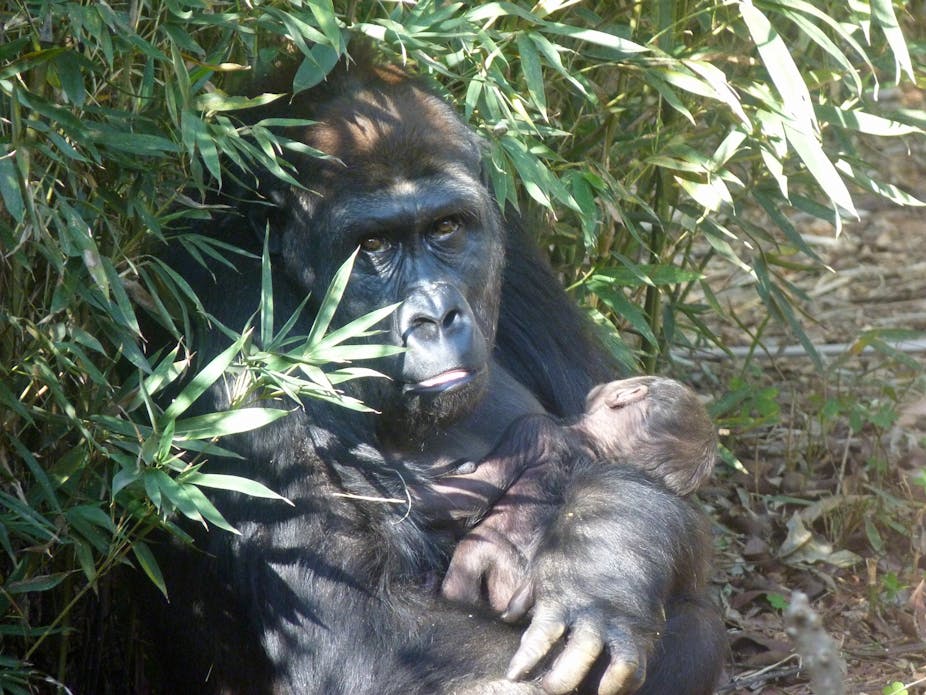Brazilians head to the polls in October to decide on their new president. The country’s votes always produce surprises such as the election of a clown in 2010 and in 1959 the election of a rhinoceros named Cacareco with 100,000 votes as a city councillor of São Paulo.
Cacareco was arguably Brazil’s first celebrity animal but the Belo Horizonte Zoo, through captive breeding, has produced the first two “Brazilian” gorillas in the past month. Once their names have been chosen, these baby gorillas will no doubt become celebrities. The zoo just needs to be careful with the naming – after a public competition in the 1970s its first gorilla was called Idi Amin Dada, after the African dictator.
London Zoo’s most famous resident Guy the Gorilla became a national icon in the 60s and 70s; he too was named after an infamous character, 17th century would-be terrorist Guy Fawkes. Superstar zoo animals long pre-date social media and demonstrate that animal celebrity culture is nothing new.

But modern zoos find it difficult to balance celebs with conservation. Celebrity culture is all about the individual and species conservation is all about the population. Thus, zoos need to strike a happy medium between public (over-)interest in certain star attractions and doing what is right for the whole species.
The problem is it takes a lot of captive animals to save a certain species from extinction, and most zoos are too small to do this by themselves. For large mammals with long lives, for example, we need approximately 250 individuals in captivity to maintain a genetically healthy population. When it comes species’ with shorter generation times (birth to sexual maturity) we need even more individuals in captivity to avoid the loss of genetic diversity: so to save a small rodent with a generation interval of a few months we would need thousands of individuals.
Paradoxically it can be more expensive to save a territorial mouse species from extinction than a species of elephant because of the need to construct hundreds, if not thousands, of mouse enclosures.
Genetic diversity is important because it allows species to adapt to their environment. But zoo animals in captivity are not subject to natural selection. Despite this, the goal of many zoos is to create a safety net population of species to guarantee the survival of their wild counterparts; this might be by reintroducing animals to the wild.
Zoos get over the numbers problem by thinking globally. International co-operation means all the gorillas in zoos participating in the captive breeding programme are managed as a metapopulation. That is, although each zoo has its own group of gorillas they are managed as if they are part of a single global population – and issues such as genetic diversity or gender balance are considered in terms of the 850+ in the programme rather than the five or six in any particular zoo.
A studbook keeper uses genetic management software to decide who should breed, who should not breed and who should be paired with who. A digital-age cupid if you like. But here decisions are based on the genetic value of the individual not their celebrity or good looks. The more genetically important the individual, the greater the chance he will be given the nod to breed. Studbook keepers also select against individuals with genetic illnesses.
An individual is genetically important if there are few copies of their genes among others: the aim being to maintain as much genetic diversity in the captive population as possible for as long as possible. This approach has been incredibly successful – the Przewalski horse, for instance, the only surviving breed of truly “wild” (never domesticated, non-feral) horse, was once down to as few as 13 individuals. Thanks to captive breeding it was brought back from the brink of extinction to number in the thousands and is now being reintroduced to Mongolia.

Reproductive technologies such as artificial insemination can help with captive breeding, but in general zoos still favour producing offspring the old fashioned way. Mainly because this exposes the animals to less risk; that is, no need for it to participate in an invasive medical procedure. But this does imply that we need to move animals around the world for dating purposes.
Leon, the male gorilla at the Belo Horizonte Zoo, came from Spain – and the two females, Imbi and Loulou came from the UK. These animals are on loan as part of the international gorilla captive breeding programme. Loaning animals across international borders could be a legal nightmare; if there were some sort of dispute in this case – the ownership of the baby gorilla, for instance – which of the three legal systems should be followed in the case of a dispute?
In the spirit of co-operation this problem has been solved in a simple means by zoos through the use of what are essentially gentlemen’s agreements. In this day and age when lawyers seem to run the world it is refreshing to know that trust can win out for species conservation.

